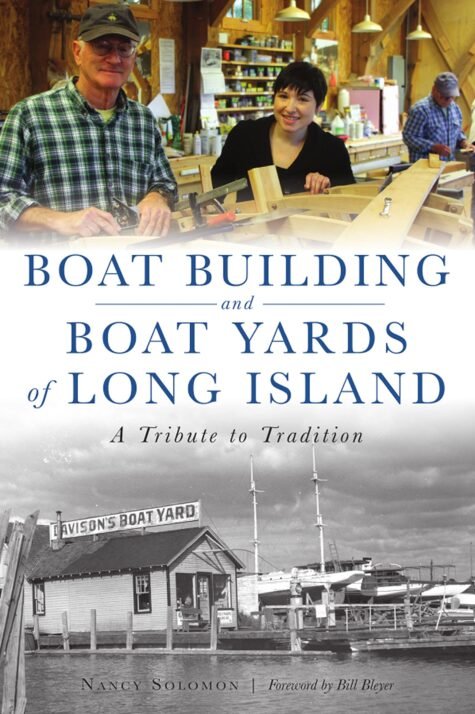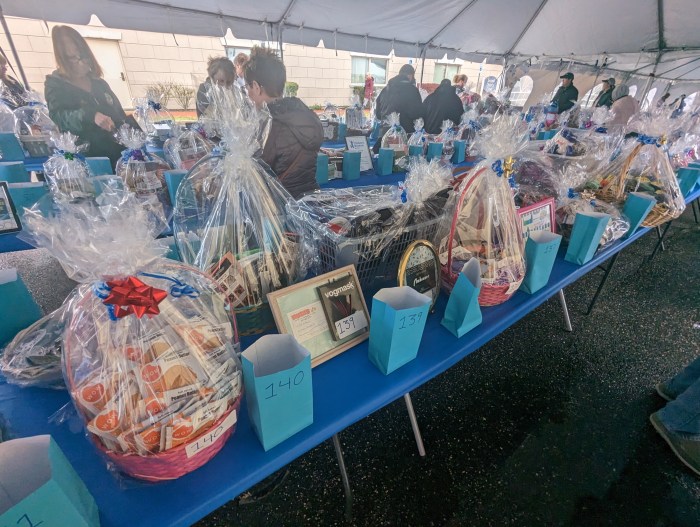If you’re familiar with Long Island’s beautiful beaches, its trails and preserves, its rolling waves, the swimming and surfing it affords to those who love to romp in its waters, why not round out your knowledge of its waterways and dive into Nancy Solomon’s new book? There you’ll find the oral histories of boatbuilders and the lore of Long Island’s boat yards that she has been gathering for over a decade.

“Boat Building and Boat Yards of Long Island :
A Tribute to Tradition” by
Nancy Solomon
Foreword by Bill Bleyer / Nonfiction/ History Press
Author of several books about Long Island, Executive Director of Long Island Traditions, columnist, curator and preservation consultant, Solomon was smitten with the sea early on. As a teen she lived across the street from a boat yard and became fascinated with how lobstermen earned their living. Tie that up – in a sailor’s knot of course – with her studies in occupational cultural traditions and early work supervising historic surveys, you have a writer/researcher/folklorist who loves the briny deep and the boats it floats.
Rich with colorful stories, boat yard history, and photos, the accounts are presented in chapters, each focusing on a different builder, yard or marina – there’s even a segment on yacht service. Chock- a-block (boat talk for a block and tackle pulley system raised to its fullest extent) with traditions passed down through generations and interesting tidbits – bandleader Guy Lombardo was a speedboat racing competitor. The book is “A Tribute to Tradition,” and to the many the many folks who made Long Island the nationally recognized and historic boat building industry it continues to be.
Meet legend Al Grover. Now 95, enamored with water vessels from the time he was 12, Grover holds the 1985 Guinness World Record for the first outboard motorboat crossing of the Atlantic.
Accompanied by his son, Al Jr., he almost gave up the voyage: 36-hour gale force winds, 25-foot waves, and Al Sr. washed overboard. But when he called his wife, Rosemarie, “’the boss,’” and said he was ready to call it quits, she told him he had to keep at it.
Solomon notes that in addition to boating, the Grovers are dedicated to their community. For years they have been promoting Freeport’s waterfront—it was Rosemarie who dubbed Woodcleft Avenue, a lively strip of restaurants and shops, “Nautical Mile.” They were also instrumental in founding SPLASH (Stop Pollution, Littering and Save Harbors).
Reading on you will find Chris Hale, boat builder and model maker. And it is boat-worthy to mention that Chris’ nautical heritage comes down through his great-grandfather, a Brooklyn boat builder.
One of the few boat builders who also make half models – a side and top-down replica – of traditional boats that once navigated the Great South Bay, Hale is self-taught in that skill. Like many builders and yard owners interviewed in the book, Hale believes in giving back. Part of Long Island Traditions maritime school program, he volunteers at local schools, teaching students the art of model making.
Boat yards, where vessels and docks are built, repaired and cared for, play a premier role in the boating industry. Greenport’s Hanff’s Boat Yard is an example of world-class boat building. Topping 150 years in business, they have attained historic landmark status.
Bill Hanff’s daughters recall the “’rough and tumble’” workers who constructed all manner of watercraft, including fishing boats, barges and ferries, as well as servicing cruise boats, “’People that went out on Sundays – like us.’”
A gathering place for dedicated customers and staff at leisure, they came to talk and socialize at the yard. Likeminded and like-hearted, if they couldn’t be in their boats, they wanted to be close to them and to those who shared their interests. Hanff provided the coffee, and a listening ear. “’He was easy to talk to,’” said one daughter. Community minded, He built a pulpit for the Lutheran church shaped like a whaling ship bow.
Bill Bleyer, Pulitzer Prize-winning journalist, warmly cites Solomon in the foreword for making readers aware of this often-overlooked industry. Especially in light of the threat of waterfront development for housing and business, and the devastation caused by storms like 2012’s Superstorm Sandy that threatened the lives and livelihood of these dedicated people.
A captain’s hats off to author Solomon!


























